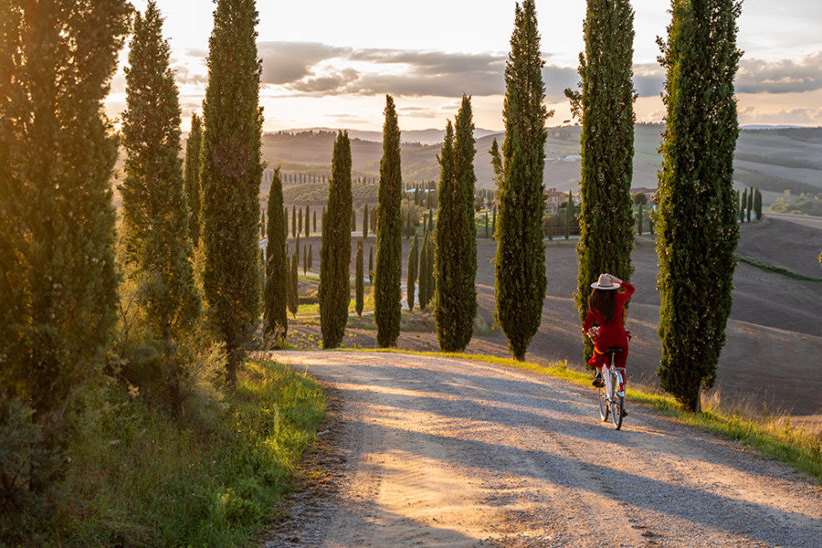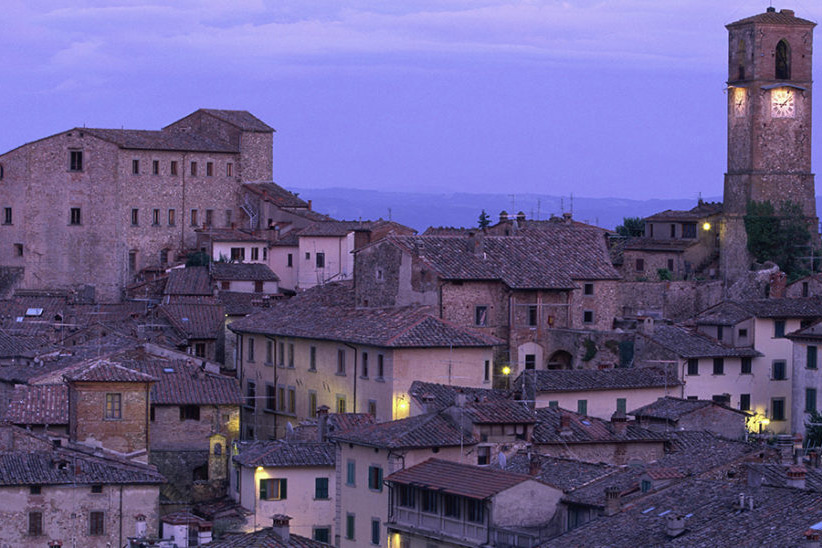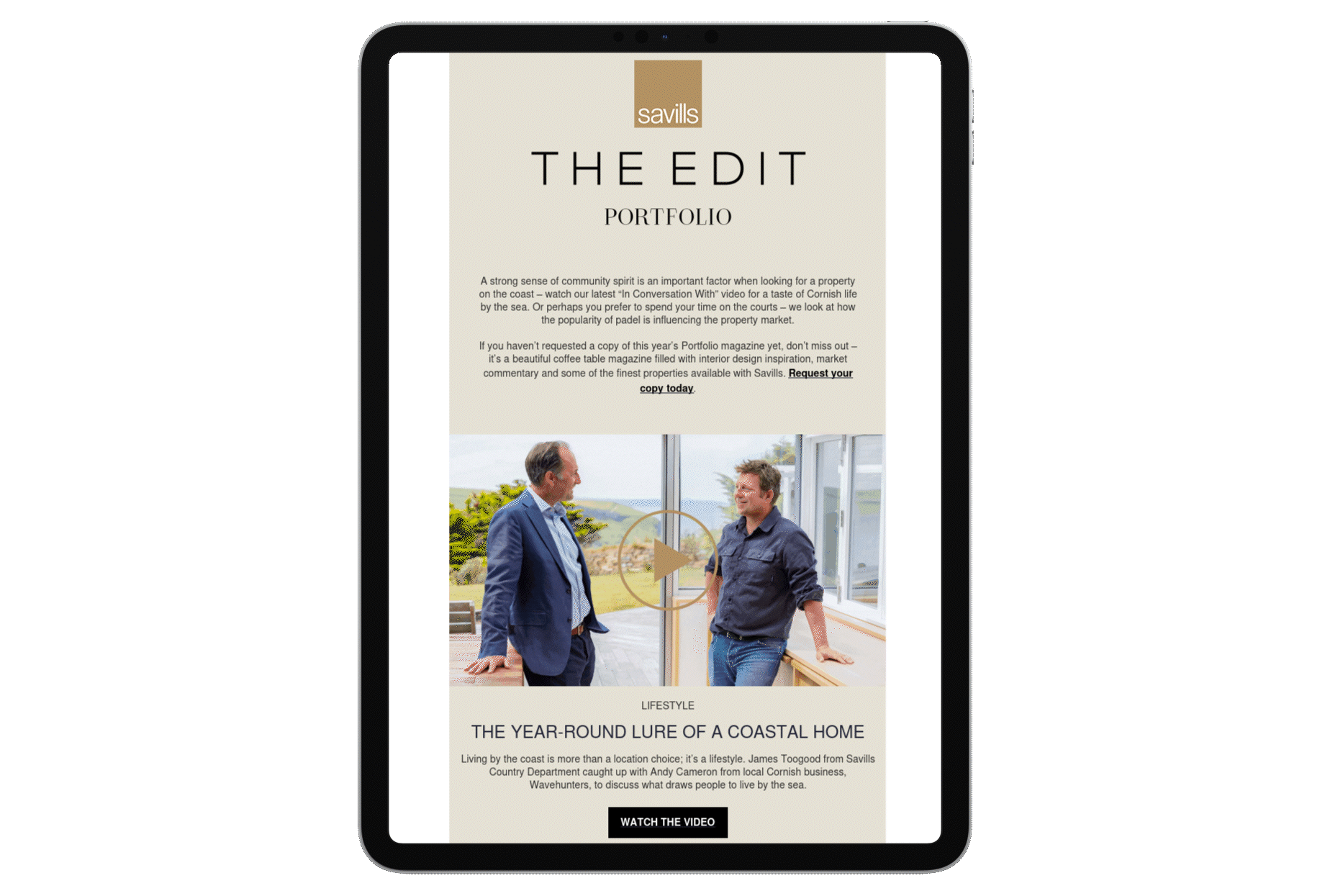Tuscany is deservedly famous for some of the most beautiful landscapes in all of Italy, and cities akin to one-of-a-kind art installations. But for people who have chosen to make the region home, there are countless spots to discover off the beaten path, in an area that’s endlessly explorable and eminently liveable.
“I love the variety Tuscany offers and the ease of accessing it,” says Jelena Cvjetkovic, Director of Savills Global Residential Network, who lived in the region for many years. “Despite the region drawing large numbers of visitors, you can still find quiet country roads and enjoy a sense of space, even in peak season.”
One of the most exciting features of Tuscany is that it highlights the very things that are becoming important on a global stage as well: sustainability, farm-to-table food, natural beauty treatments, “zero kilometre” ingredients and artisanal craftsmanship, to name a few – things that have been treasured here long before it was chic. And these labels are real, not a marketing tool. At Podere Il Casale outside Pienza, for example, a family-owned farm offers up cheese from the goats and sheep from their flocks, and salads with foraged greens and flowers from the fields alongside, served up at lunches overlooking the spectacular Val d’Orcia while children play with the resident animals.
Thermal hot springs like Bagno Vignoni, Bagni San Filippo, and Saturnia, on the other hand, have drawn sybarites since Roman times, and locals continue to tout their health and beauty benefits, a place to go with family and friends on a day off, often with a picnic and a bottle of local wine in hand. “Taking a spur-of-the moment trip to the hot springs on a drizzly autumn day and lolling in a hot pool late into the night under a canopy of stars would leave me feeling like I’ve had a holiday,” says Cvjetkovic.
The diversity of the region is spectacular: renaissance and medieval cities and towns alternate with mountains and gentle farmland, and an often-overlooked coastline. “Tuscany is a huge area and within it there are so many different landscapes, towns and styles of properties,” explains Victoria Greenwood of Abode Italy, an associate of Savills. “Of course there are the famous towns of Florence and Siena, but there are many other lesser-known treasures worth exploring, places such as Anghiari. There is so much beauty within easy reach. You are never far from an exquisite medieval town, unblemished countryside, the Mediterranean Sea or the best culinary experiences. Owning a property here is an enriching experience in part because the people here are so genuine and friendly. They are always keen to help or share their local traditions.”
A back-to-the-land mentality informs daily life and priorities here. “I love the olive harvest – the weather is usually still mild when this begins, and it can be a very social affair, with friends and neighbours joining in in exchange for some freshly pressed oil,” says Cvjetkovic. “At the mill, the atmosphere can turn almost febrile, the local farmers becoming quite competitive about their oil, the yield and the low acidity.”
As the seasons change, so do restaurant menus and focus. Pecorino di Pienza is accompanied by succulent favas, for example, in spring, and earthy truffles from towns like San Miniato appear on pasta in the autumn months (and there is always much competition between towns over whose ingredients are best).
And wines from Montalcino, Chianti, Bolgheri, and Montepulciano, among others, each tout their unique style and terroir. This rivalry and tradition extends into local festas, festivals that run through the year and become a focal point to the calendar. You may have heard of the Palio di Siena horse race, but what about the barrels of wine run up by muscular-thighed men in Montepulciano (called Bravio delle Botti), or the Luminara della Santa Croce in Lucca, where the town is lit with seemingly thousands of candles? Once you live here, you get swept up in the excitement, soon waving a flag for your contrade (neighbourhood) with the same enthusiasm as local-born residents.
Walking, biking, and horseback riding give you a slower view of an already quieter world. There are endless “white” (non asphalt) roads for cycling. The famous L’Eroica bike race takes place in October but you can download maps and do stretches of it on your own. If walking is more your speed, Tuscany is well signposted for jaunts from town to town, or you can organise a customised walk with outfitters like Maremma Safari Club, led by Rudston Steward, who has also made the region home.
“After a decade in New York City I was pretty burnt out and dissatisfied with the frenzied lifestyle there, so I decided to move to Tuscany on a whim,” says Steward. “That was over 20 years ago and I’ve never looked back. There is something deeply rewarding, almost addictive, about the rhythms of living in rural Tuscany. There’s a strong sense of community around here, and if you spend a lot of time walking through this remarkable landscape, as I do, you get plugged into a slow-travelling mindset that allows you to appreciate and savour the simple (and utterly delicious) small pleasures in life. That’s the Italian way!” If you prefer to see the landscape by car, the scenic drives are staggering – the whole SR 222 stretch from Florence to Siena is arguably one of the world’s most beautiful (beware the speed cameras, though).
The natural world flourishes and changes colour as the months come and go. Fields of blood red poppies punctuate the wheatfields in late spring, sunflowers stand in stately rows in late summer, and the gold slowly returns to fluorescent in winter months. You can enjoy more curated gardens too, places that are connected to a family villa but still open to the public. At La Foce, for example, which recently featured on HBO’s award-winning Succession series, the gardens have long been a focal point for the area. Designed by Cecil Pinsent and Iris Origo (her family still owns and manages the estate), the almost British formality mixes beautifully with the more wild landscape that it looks out on. The property also holds an annual classical musical festival that draws visitors who plan their trips specifically around the concerts, and Tuscan homeowners who mark it in their calendar as a season must.
These simple pleasures are what make Tuscany so delightful. Yes, of course one must visit Florence and drink a fine Brunello. But the wildflowers, the hot springs, the walks, the cuisine and the one-of-a-kind festivals are what make one stay for years.
It’s what drew residents like Frances Mayes here initially and what sold millions of copies of her memoir, Under the Tuscan Sun – a testament to the simple but joyous lifestyle. “About 10 gigantic things make me love living in Tuscany. Above all, everyday life is more fun,” the writer explains. “The exuberance and humanity and warmth continue to amaze me, even after many years here. Plus, the food is the best, people know how to drive, trains are fast, you’re surrounded by beauty, my home is alive on its hillside, and there’s a Roman road outside my door, always inviting me to roam. Add to that – the most various country in the world lures me to travel. Every 30 miles, a different world.”
Ondine Cohane is a contributing editor at Conde Nast Traveler US and UK, and also writes frequently for The New York Times travel section. For the book Always Italy, Ondine and Frances Mayes visited every region of Italy. Cohane lives in Pienza with her 12-year-old son.





